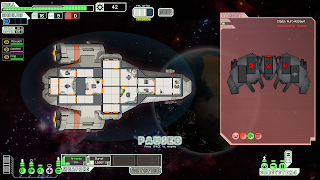With X-Com Enemy Unknown this past week, we got to see what a re-imagining of the original X-Com would look like today by Firaxis. In my analysis of EU, I mentioned the biggest fundamental shift in terms of design: going from a stat heavy pen and paper design influence to a board game design influence.
Board game design has become a viable option for strategy designers both as a way of creating gameplay and getting around having to create a complex AI. While it does have its advantages for the designer, they do come at a cost as I’ve been seeing in EU.
Board game design’s main advantage is that it allows someone to create compelling gameplay without overwhelming the player. When you compare a game that is designed like this, with a game built around complex functions and systems, there are some elements that are common with all board game design.
The Good:
1. Abstract Set Rules: A basic definition of a game is that it is a series of rules that both sides must agree on, and with a board game design that statement is set in stone. These titles are made up of a series of rules that the player and the AI must adhered to that never change.
“Rule breaking mechanics are a form of imbalanced design, as they are meant to break the established rules of the game. But their use is limited enough to prevent it from ruining the game.”
The reason why the game rules are set in stone is that they allow the player to easily grasp how the game works and provides clear choices to the player. They know what happens if they choose to do A instead of B or vice-versa. There isn’t a chance that either choice will perform completely differently than what was expected by the player.
The rules of the game are explicit with how they work and leave no room for something different happen. If a skill says that it causes the enemy to panic, then it will do that every time without question (unless another item or skill directly counters it.)
2. Easy to Follow Numbers: Keeping with the first point, board games are designed around accessibility. If there are any numbers for the player to keep track of, they are kept low and whole numbers. You won’t find yourself having to decide between either 1.76 accuracy bonus or 435.23 damage for example.
Numbers are kept low and abstracted to keep things easy to understand. In a normal game, you may have attack damage in the hundreds or thousands, with a board game the highest you may see is in the double digits.
If there are any calculations to be made, they will be kept simple with some games actually show how the results were calculated.
The advantage of this is that it helps both the designer and the players out. The designer doesn’t need to come up with advanced mathematics functions or code to figure out if an attack hits or not, nor does the player need to spend a long time figuring out how things work.
The abstraction works as unit attributes are balanced in relation to one another. A powerful monster could only need 12 points of health, if in relation your character only has 6 for example.
3. Rule Breaking: By setting the rules and mechanics of the game to be completely rigid, it allows the designers to introduce choices and strategy with rule breaking mechanics or modifiers.
Collectible Card Games are all about modifiers as each player attempts to alter the rules to their favor. Modifiers are designed to shake up the normal rules of a game and can either be used for further game balance or strategy. In Civilization 4, instead of having to come up with a complex function to make spear-men counter cavalry units, they just gave them the “anti cavalry” perk that gives them increase attack damage to all cavalry units.
In EU, the special abilities you can unlock for your soldiers each in some way are a modifier to the rules in place. All designed to give you more leeway in terms of strategy. Because the player can only choose one upgrade at each promotion, they can never use all the modifiers on one person, which would shift the game into imbalanced territory.
That last statement is a bit odd, considering that rule breaking mechanics are a form of imbalanced design, as they are meant to break the established rules of the game. But their use is limited enough to prevent it from ruining the game.
While board game design does make things easier to design, it does come at several costs that affect play-ability.
The Bad:
1. Limits Choices: Because board games are designed around unbend-able rules, it means that the gameplay will operate the same way every time. This in turn leads to the game becoming repetitive due to the limited actions at the player’s disposal.
In EU, you can’t personalize your units with a variety of equipment, due to the slotting system. Because of how cover is so effective at keeping the enemy alive, you only have a few options to get around it.
This is where games built around rogue-like design or randomization excel, as they force the player to continually adapt to the changing situations and not be forced to pick from a limited selection of choices.
The other problem is that with limited choices, it creates situations where there is always an optimal choice that further limits replay-ability which leads to another problem.
2. The Chick Parabola: The advantages of board game design: clear choices and hard system rules leads to one of the biggest disadvantages: Once the player learns the rules and design of the game, it becomes very easy to optimize your strategy and render the game’s replay ability and enjoyment moot.
This phenomenon has been dubbed “The Chick Parabola”: coined by game journalist Tom Chick. What happened was that while playing Civilization 4, Tom realized that as he found the best ways to play the game, it rendered the game very repetitive as he knew the best option every time. Because of that it also trivialized the AI due how it was designed.
With board game design, the AI is not programmed to “play the game” like the player, but to make their choices based on the rules and available options in the game. The AI doesn’t understand long term optimization in which some choices are the best ones every-time due to how the rules work. Or to make less than optimal short game choices, for a much stronger late game.
For the player this leads to coming up with dynamics, that in other games would lead to more game diversity. But with a board game, just leads to the game becoming repetitive.
To put it another way, the player sees the forest for the trees with their advanced understanding of the mechanics and rules. But the computer can only see the trees in a metaphorical sense. Eventually the player will reach the point where they have discovered the most optimal way to play the game, making it boring.
At that point the only way for the player to feel challenged would be to limit their own tactics and not play the game at their best, which is very hard to do.
With EU, I’ve already started to see patterns developing for both the tactical and strategic layers that lead to optimal ways to play. What’s worse is that in the original X-Com, you had a variety of weapons and tactics for progress. But in EU, due to how the strategic layer works with panic and money, it leaves you with very few options of how to survive past the first month.
If you don’t rush certain tech researches, get specific country funding and structure placements, I can’t see any way for someone to beat the game on either classic or impossible difficulty.
Engineers for instance both lower the cost of buying items and act as a gating mechanic for building more structures. In this regard they are more important than scientists and absolutely needed to keep up in terms of base development.
When you have 4 choices and 1 of them is the best one every-time, why should you even consider the other 3? Now designers are not foolish and realize that a limited AI and rule set lead to the game becoming dull. But, the most popular solution for this is not the best one for the player.
3. Deck Stacking: On the flip side of board game design making it really easy to learn and master the game, it also makes it easy for the designers to make the game difficult. However, it’s not difficult as in making the game more challenging, but by stacking the deck against the player.
For instance, if the enemy starts out by being able to do 4 points of damage with a single hit, if you lower the player’s starting health to 3 on hard mode then the game becomes more difficult. But you’re not challenging the player to come up with new tactics or facing different problems, you’re just making the game difficult.
In recent Civilization titles, its common knowledge that as you go up in difficulty, the enemy AI doesn’t play the game better, but instead is given discounts on building and researching. It’s very easy to build a large army when you get half off every unit without trying.
In my opinion this kills a game for me, as it doesn’t feel like I’m being challenged to get better. Instead it feels like I’ve been asked to run a race with weights around my legs. Yes it is harder, but it’s not testing me to get better, but dealing with arbitrary difficulty spikes.
“To put it another way, the player sees the forest for the trees with their advanced understanding of the mechanics and rules. But the computer can only see the trees in a metaphorical sense.”
Now to be fair, developing AI complex enough to not only make decisions based on the rules, but actually play and challenge the player is difficult. There are very few strategy games that have AI that complex. With the only one that comes to my mind, is from Supreme Commander 2 following the modder: Sorian who reworked the AI.
After spending a week playing nothing but X-Com EU on classic ironman, I’m starting to feel the Chick Parabola closing in. While Firaxis has done a great job at translating and streamlining the complexities of X-Com to a modern audience. I think they trimmed too much of it, with how limited you are in terms of tactics and strategy.
At this point, I don’t think EU is going to have the replay-ability that the original X-Com had. Once you figure out the optimal strategy for winning, there is no reason to replay the game again. Unless you want to limit things further by playing on a harder difficulty.

Armageddon Empires is a CCG board game. Even with set rules, the variety of deck building and special events keep the game interesting.
What would save EU in my opinion is adding in more randomize elements and viable options for the player, so that there isn’t always the same right choice. Viable options especially, as if they just release content to make the game harder, then they are stacking the deck further. There have been reports of modders doing just that, and of course the added potential of DLC from Firaxis, so it’s not doom and gloom just yet.
Many expert designers and game consultants suggest that novice game designers start with developing board and card game design. As it allows the designer to work on game mechanics and balance through a rigid system without the need of AI programming. But it’s important not to become locked into this design philosophy, as evident by the inherent problems with it.
Josh Bycer





